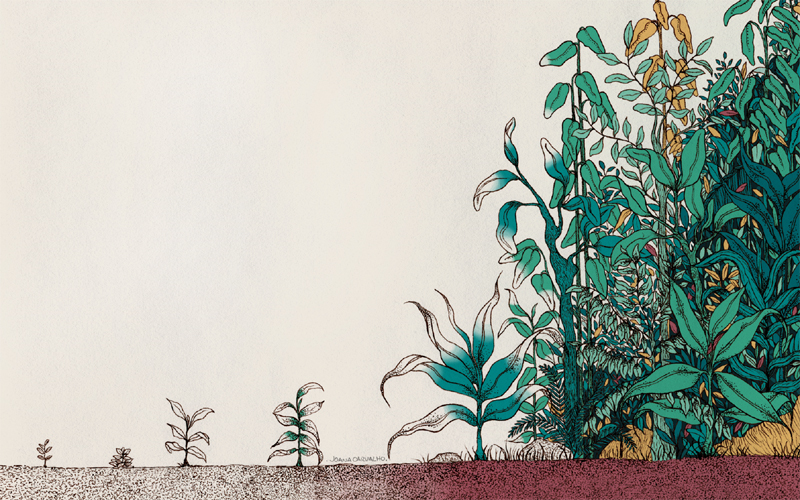To grow or not to grow?

Researchers led by Elena Baena-González, IGC principal investigator and member of the GREEN-IT Research Unit, uncovered the mechanisms by which information about water availability is coupled to the decision of plants to grow. The study now published in Nature Plants raises questions about how the water-to-land transition occurred during evolution and reveals information that can help to define strategies for developing drought-tolerant crops.
Plants use photosynthesis to convert sunlight, water and carbon dioxide to the sugars they need to grow and that ultimately feed our planet. Water is also essential for transporting nutrients from the soil and for providing rigidity to the tissues (turgor) so the plant can remain upright. Lack of water leads to drought and ultimately to plant death. Being such an essential factor, plants have developed mechanisms to monitor water availability in the soil and to communicate this information to distant tissues to induce appropriate adaptive responses. When water is scarce, the phytohormone abscisic acid is produced, inducing a very rapid closure of the pores in the leaves (stomata) to prevent water loss through transpiration. In addition, growth of most organs stops, so that resources can instead be used in protective measures. Until now how the lack of water resulted in growth arrest remained largely unknown.
In fundamental science the curiosity in understanding unknown mechanisms drives the implementation of new projects. The results show new data on how plants manage the information of the soil they are in, determining whether to grow or not. Using the model plant Arabidopsis thaliana, the researchers observed that when the SnRK1 kinase is genetically inactivated, plants develop larger roots under suboptimal conditions. Although such uncontrolled growth may be fatal under severe drought, it is likely to increase the capacity to absorb water from the more superficial soil layers, potentially improving plant growth when water is moderately limited. Future experiments work will aim to address these questions and to identify downstream factors that could be more amenable for manipulation of this trait also in crops.
Read Press Release
Read Paper
